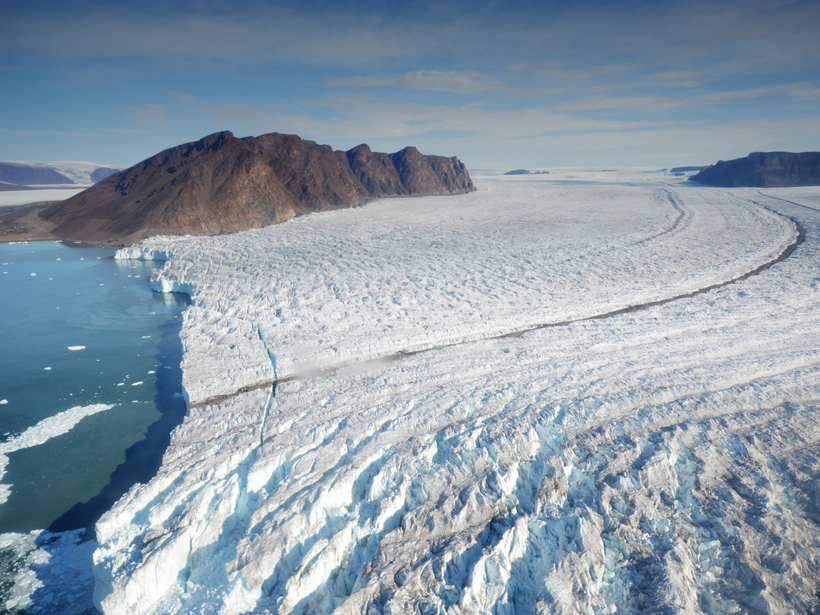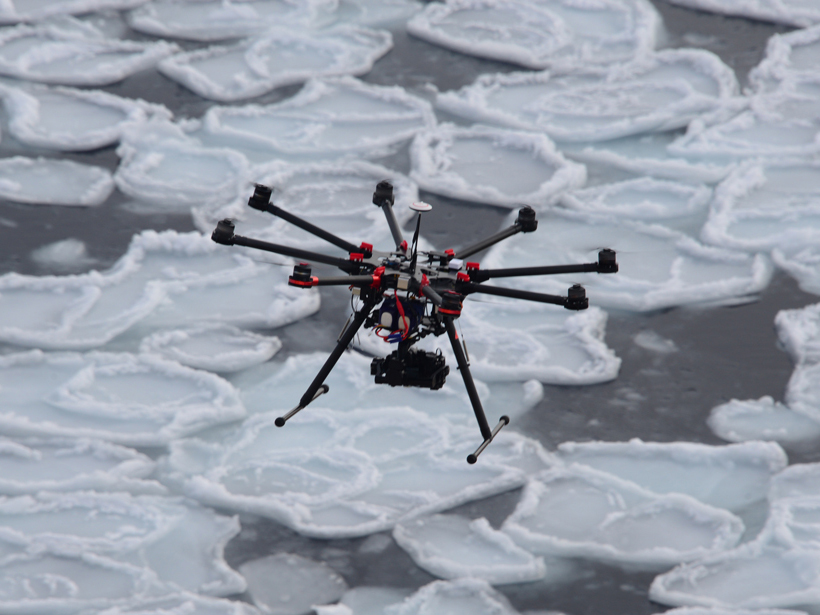From the bottom of acid lakes to up in the sky, autonomous vehicles are changing the way scientists view and study Earth.
drones & ROVs
Drone Peers into Open Volcanic Vents
An unmanned aerial vehicle provided the high-resolution data that allowed scientists to construct their first detailed map of erupting vents at Stromboli, one of the world’s most active volcanoes.
Detecting Gas Leaks with Autonomous Underwater Vehicles
A Norwegian team develops an improved, cost-effective method to detect chemical discharges under the sea.
An Autonomous Boat to Investigate Acidic Crater Lakes
A novel aquatic drone ventured into highly acidic waters to test the feasibility of remotely exploring and surveying hazardous volcanic lakes.
New Technique Reveals Iceberg Calving Process
Researchers used unmanned aerial vehicle data to model the growth of a fracture that broke a 1-kilometer-long iceberg off a Greenland glacier.
Wave Gliding in the Eye of the Storm
Scientists use a new remote-controlled robot to capture data from the middle of an open ocean typhoon.
Precision Landing Will Be Key to NASA's Mars 2020 Rover
Landing robotics distinguish the craft from past models, allowing researchers to target smaller flat areas that are surrounded by rock.
Planetary Caves' Role in Astronaut Bases and the Search for Life
2nd International Planetary Caves Conference; Flagstaff, Arizona, 20–23 October 2015
Unmanned Platforms Monitor the Arctic Atmosphere
In the Arctic, drones and tethered balloons can make crucial atmospheric measurements to provide a unique perspective on an environment particularly vulnerable to climate change.
Drones in a Cold Climate
As climate change reshapes the Earth's polar regions, scientists turn to drone-mounted cameras to measure sea ice. One expedition found out that flying drones near Antarctica isn't easy.










